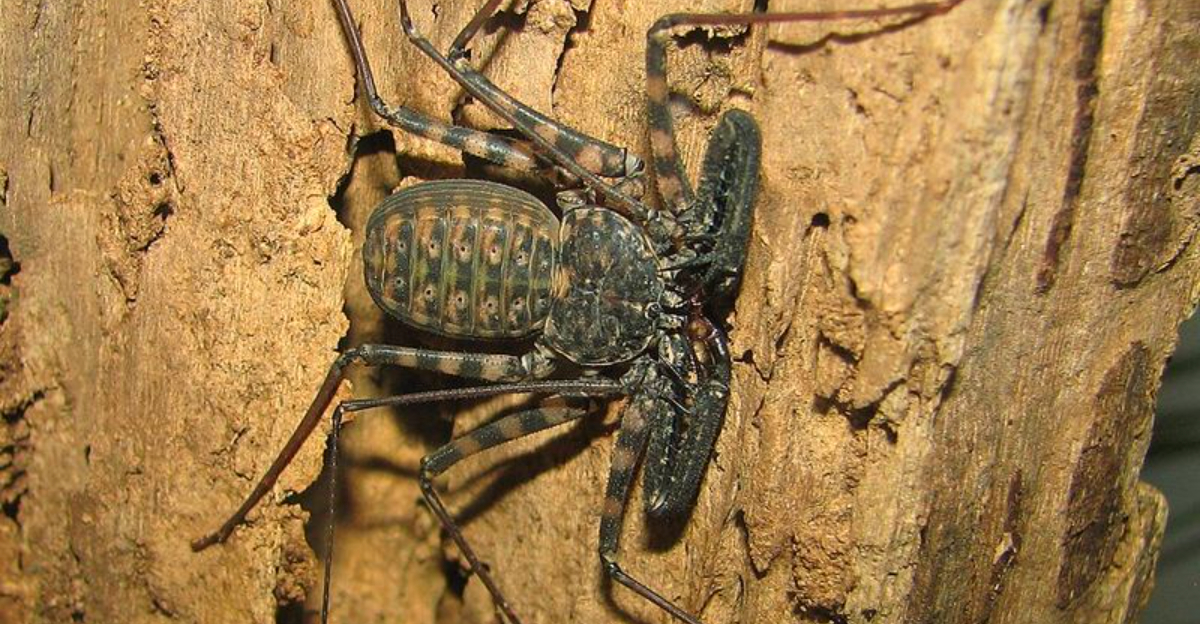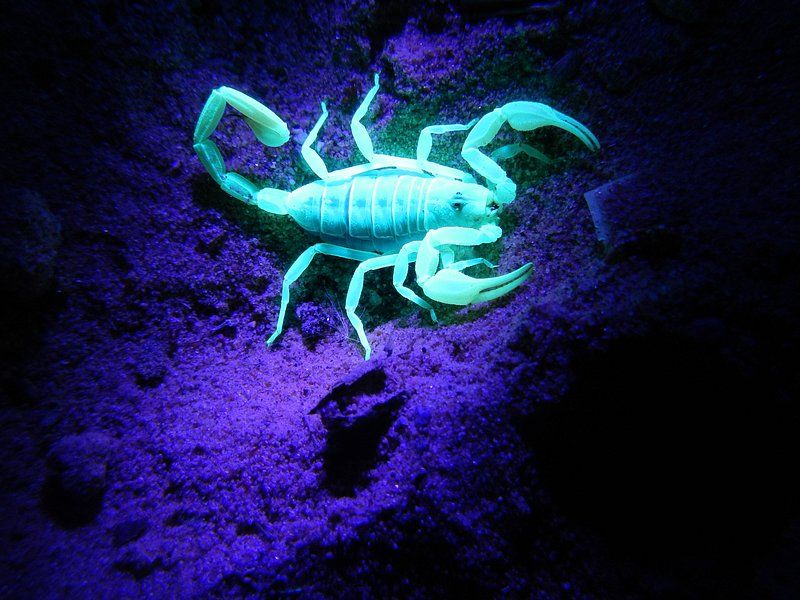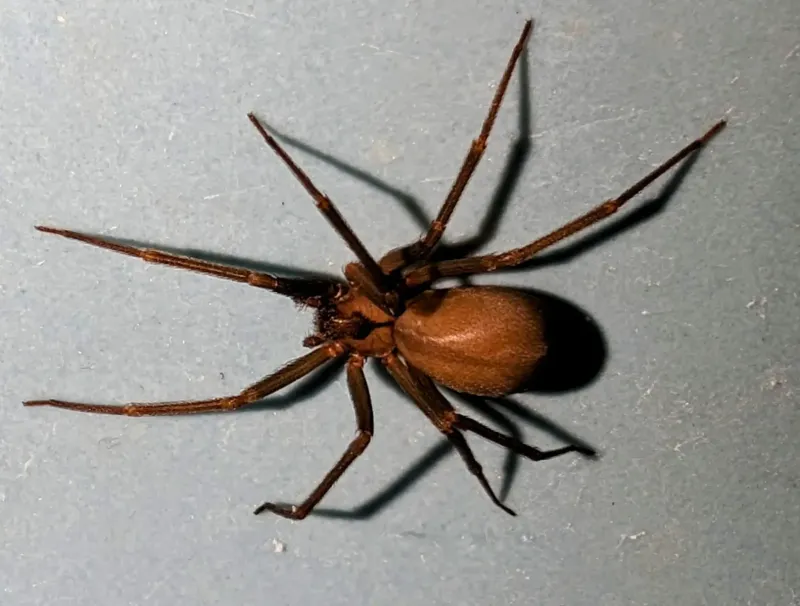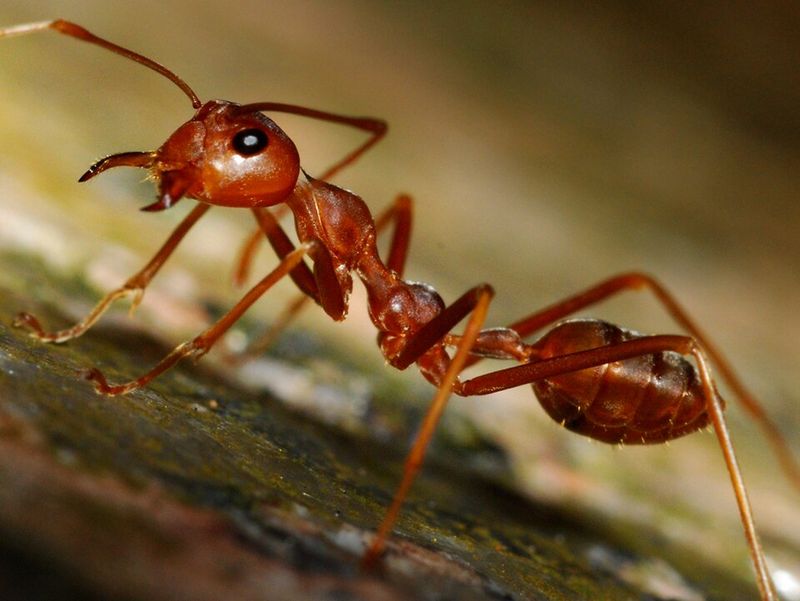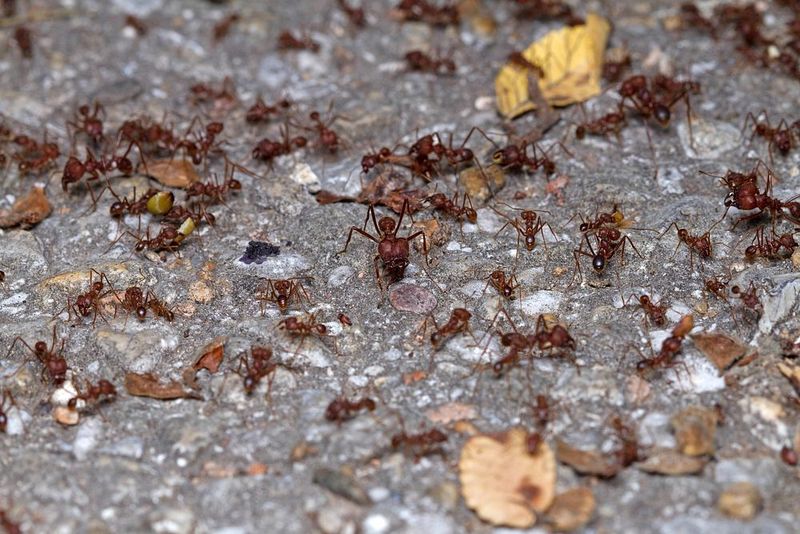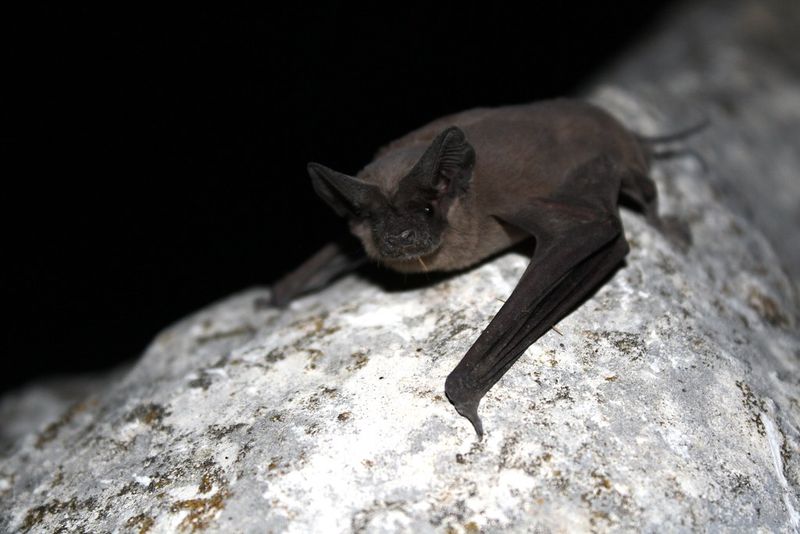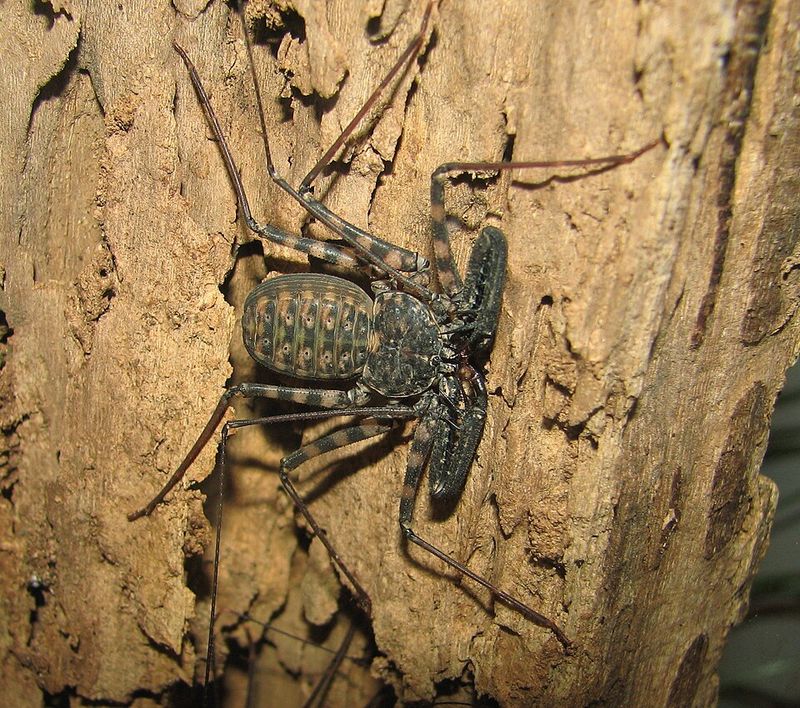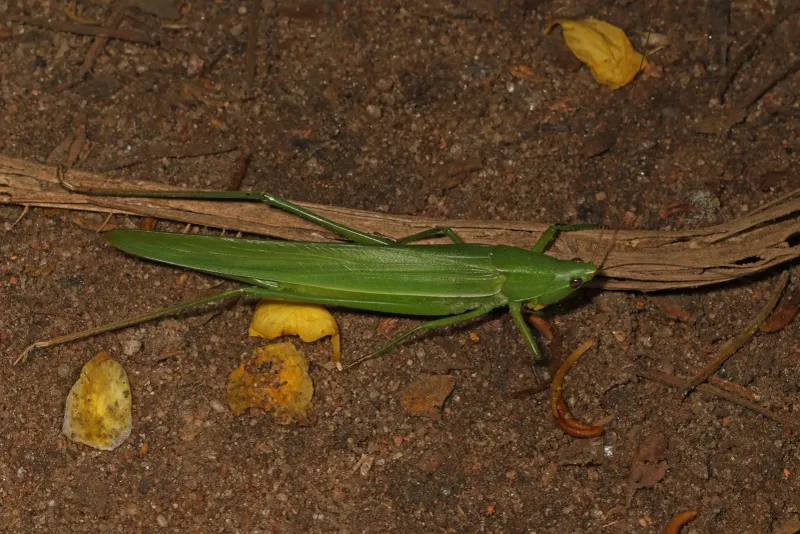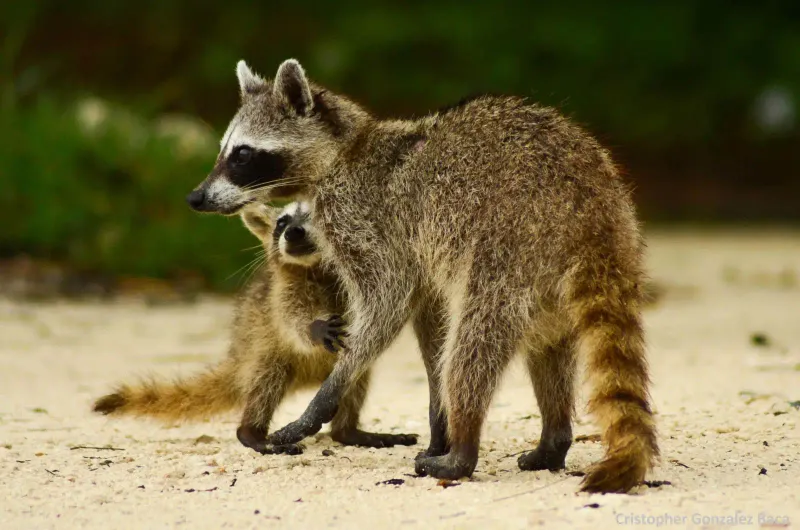When the sun sets over the Texas Hill Country, a whole new world wakes up. Scorpions, spiders, and countless other creatures emerge from their hiding spots to hunt, forage, and explore under the cover of darkness. Understanding these nocturnal neighbors helps you stay safe while appreciating the fascinating ecosystem thriving right outside your door.
1. Striped Bark Scorpion — The Nocturnal Prowler of Homes
Centruroides vittatus holds the title as Texas’s most common scorpion, and the Hill Country sees plenty of them. During daylight hours, these striped hunters tuck themselves under rocks, logs, or bark, waiting patiently for darkness to fall.
Once night arrives, they venture out to hunt insects with their venomous stingers. Their sting hurts and causes swelling, but healthy adults usually recover without serious complications. Children, elderly folks, or anyone with allergies should seek medical help if stung.
Around homes, scorpions sneak inside through tiny gaps, cracks, or drainage openings. Check your shoes before wearing them, inspect storage boxes on garage floors, and watch for them near foundations or under landscape rocks where they love to hide.
2. Brown Recluse & Black Widow — Hidden Spiders of Dark Corners
Two notorious spiders call the Hill Country home, though they prefer staying out of sight. Brown Recluse spiders (Loxosceles reclusa) hide in attics, closets, and wood piles, avoiding human contact whenever possible. Their bite can cause tissue damage in some people, though severe reactions remain uncommon.
Black Widow females sport that famous red hourglass on their bellies, warning predators of their neurotoxic venom. Bites can be serious for kids, seniors, or those with health issues, but modern medical care makes fatalities extremely rare.
Both species avoid light and become active mainly at night or when disturbed. Watch behind stored boxes, inside rarely worn shoes, and around wood piles where these spiders build their webs.
3. Fire Ants — Night Ants and Aggressive Stingers
Solenopsis invicta doesn’t sleep when the sun goes down. These aggressive insects defend their mounds fiercely around the clock, especially during warm weather when they’re most active. Stepping on a mound at night can lead to a painful surprise you won’t soon forget.
Their stings burn intensely and leave itchy welts that last for days. Some people experience allergic reactions requiring immediate medical attention. Fire ants work together, so one disturbed ant quickly signals dozens of angry nestmates to attack.
Look for mounds in yard soil, flower beds, near building foundations, and along trail edges. Avoid walking barefoot outside after dark, and always watch where you sit during evening gatherings on the lawn.
4. Texas Leafcutter Ants — The Fungus Farmers of the Night
Atta texana operates one of nature’s most fascinating agricultural systems. These native Texas ants harvest fresh leaves after sunset, carrying their prizes back to underground fungus gardens that feed the entire colony. Their nighttime foraging lines become especially visible under porch lights and landscape lighting.
Gardeners sometimes consider them pests because they can strip plants bare in a single night. The ants show remarkable strength, carrying leaf pieces many times their own body weight across impressive distances.
Watch for their trails along woodland edges, through gardens, and across lawns near wooded patches. The sight of hundreds of ants marching with green leaf fragments at dawn creates an unforgettable natural spectacle.
5. Mexican Free-Tailed Bats — The Nightly Insect Vacuum and Bat Cave Communities
Bracken Cave hosts roughly 20 million Mexican free-tailed bats during summer months, creating one of Earth’s greatest wildlife spectacles. Each evening at dusk, these insect-eating champions pour from caves in spiraling columns visible for miles around.
A single bat devours thousands of mosquitoes, moths, and other insects nightly, providing natural pest control across the Hill Country. Their appetite helps farmers and homeowners while maintaining ecological balance throughout the region.
Predators like owls, hawks, and snakes gather near cave entrances, hoping to snag bats flying too low. Visitors can witness spectacular bat flights from designated viewing areas at Hill Country parks, bridges, and cave preserves throughout warm months.
6. Underground Cave Spiders & Troglobites — The Hidden Dwellers
Deep within Hill Country’s limestone cave systems, specially adapted creatures spend their entire lives without seeing sunlight. Tayshaneta microps, the Government Canyon bat cave spider, represents one endangered species living exclusively in Bexar County caves. These pale, eyeless spiders evolved specifically for cave environments.
Cave-dwelling invertebrates pose no danger to humans—they’re simply remarkable examples of evolution adapting to extreme conditions. Most people never encounter these hidden residents unless exploring deep cave passages with experienced guides.
Scientists study these troglobites to understand how life adapts to permanent darkness. They inhabit guano-rich zones, limestone passages, and breakdown areas where organic material provides food in an otherwise nutrient-poor environment.
7. Nocturnal Insects & Acoustic Backdrop — Cicadas, Katydids, Crickets
As darkness settles over the Hill Country, a symphony of chirps, buzzes, and clicks fills the air. Katydids, cicadas, crickets, and countless moths become active, forming the acoustic backdrop of summer nights. Their songs attract mates while simultaneously serving as dinner bells for hungry bats and other predators.
Large moths and beetles flock toward outdoor lights, sometimes startling people relaxing on porches. These insects play crucial roles as pollinators and prey species supporting the entire nocturnal food web.
Listen near shrubs, tree foliage, and moist vegetation where singing insects gather in greatest numbers. Their presence indicates a healthy ecosystem thriving around your home.
8. Predators & Opportunists — Owls, Raccoons, Snakes
Where prey gathers, hunters follow. Great horned owls, barn owls, raccoons, skunks, and snakes like coachwhips patrol near cave entrances and bat roosts after sunset. These opportunistic predators stake out positions where bats emerge, hoping to catch one flying too low or stumbling during takeoff.
Tree branches near roosts become prime hunting perches for owls with exceptional night vision and silent flight. Snakes sometimes climb cave walls, snatching bats right from their roosting spots.
While not insects or arachnids, these predators complete the nocturnal ecosystem picture. Watch for them near cave mouths, woodland edges, and water sources where prey animals concentrate during nighttime hours.
